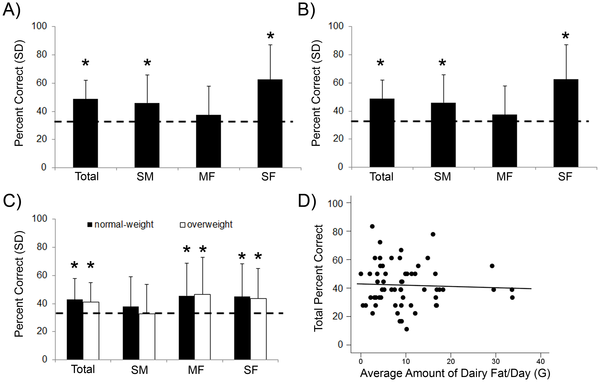A new paper says the the human sense of smell can detect dietary fat in food.
As the most calorically dense nutrient, fat has been a desired energy source across much of human evolution - but those people who claim they want to eat like their ancient ancestors are doing themselves a huge disservice eating that way now. A diet high in fat today is a health problem but in the past it would have been advantageous to be able to detect sources of fat in food, just as sweet taste is thought to signal a source of carbohydrate energy, says Johan Lundström, PhD, a cognitive scientist at Monell Chemical Senses Center and senior author of a new paper on the topic.
And it may be an advantage in reducing fat. Since smell is detected before taste (usually), the findings could open a path to us using odor to make low-fat foods more palatable and reduce dietary fat intake.
Although scientists know that humans use sensory cues to detect fat, it still remains unclear which sensory systems contribute to this ability. The scholars reasoned that fat detection via smell would have the advantage of identifying food sources from a distance. Previous research had determined that humans could use the sense of smell to detect high levels of pure fat in the form of fatty acids, it was not known whether it was possible to detect fat in a more realistic setting, such as food.
For the current work the authors asked whether people could detect and differentiate the amount of fat in a commonly consumed food product, milk. Healthy subjects smelled milk containing an amount of fat that might be encountered in a typical milk product: either 0.125 percent, 1.4 percent or 2.7 percent fat.

Mean percentage correct discrimination for each stimulus triplet. In all graphs: Error bars denote standard deviation, and stars above bar denotes results significantly different from expected chance performance (33.3%, p <.05). S = skim milk, M = medium milk, F = fat milk. See Methods section for further details regarding fat percentage. SM = discriminating between skim and medium milk; MF = discriminating between medium and fat milk; SF = discriminating between skim and fat milk. Dotted line in panel A, B,&C indicates expected chance performance (33.3%). A) Results of Experiment 1 in a North-American population. B) Results of Experiment 2 in a Dutch population. C) Results of Experiment 3 including normal-weight (black bars) and overweight individuals (white bars). D) Relationship between total discrimination performance and average daily dairy fat intake (in grams). Solid line in graph represents the regression line.
doi:10.1371/journal.pone.0085977
The milk samples were presented to blindfolded subjects in three vials. Two of the vials contained milk with the same percent of fat, while the third contained milk with a different fat concentration. The subjects' task was to smell the three vials and identify which of the samples was different.
The same experiment was conducted three times using different sets of subjects. The first used healthy normal-weight people from the Philadelphia area. The second experiment repeated the first study in a different cultural setting, the Wageningen area of the Netherlands. The third study, also conducted in Philadelphia, examined olfactory fat detection both in normal-weight and overweight subjects.
In all three experiments, participants could use the sense of smell to discriminate different levels of fat in the milk. This ability did not differ in the two cultures tested, even though people in the Netherlands on average consume more milk on a daily basis than do Americans. There also was no relation between weight status and the ability to discriminate fat.
"We now need to identify the odor molecules that allow people to detect and differentiate differentiate levels of fat. Fat molecules typically are not airborne, meaning that they are unlikely to be sensed by sniffing food samples," said lead author Sanne Boesveldt, PhD, a sensory neuroscientist. "We will need sophisticated chemical analyses to sniff out the signal."






Comments